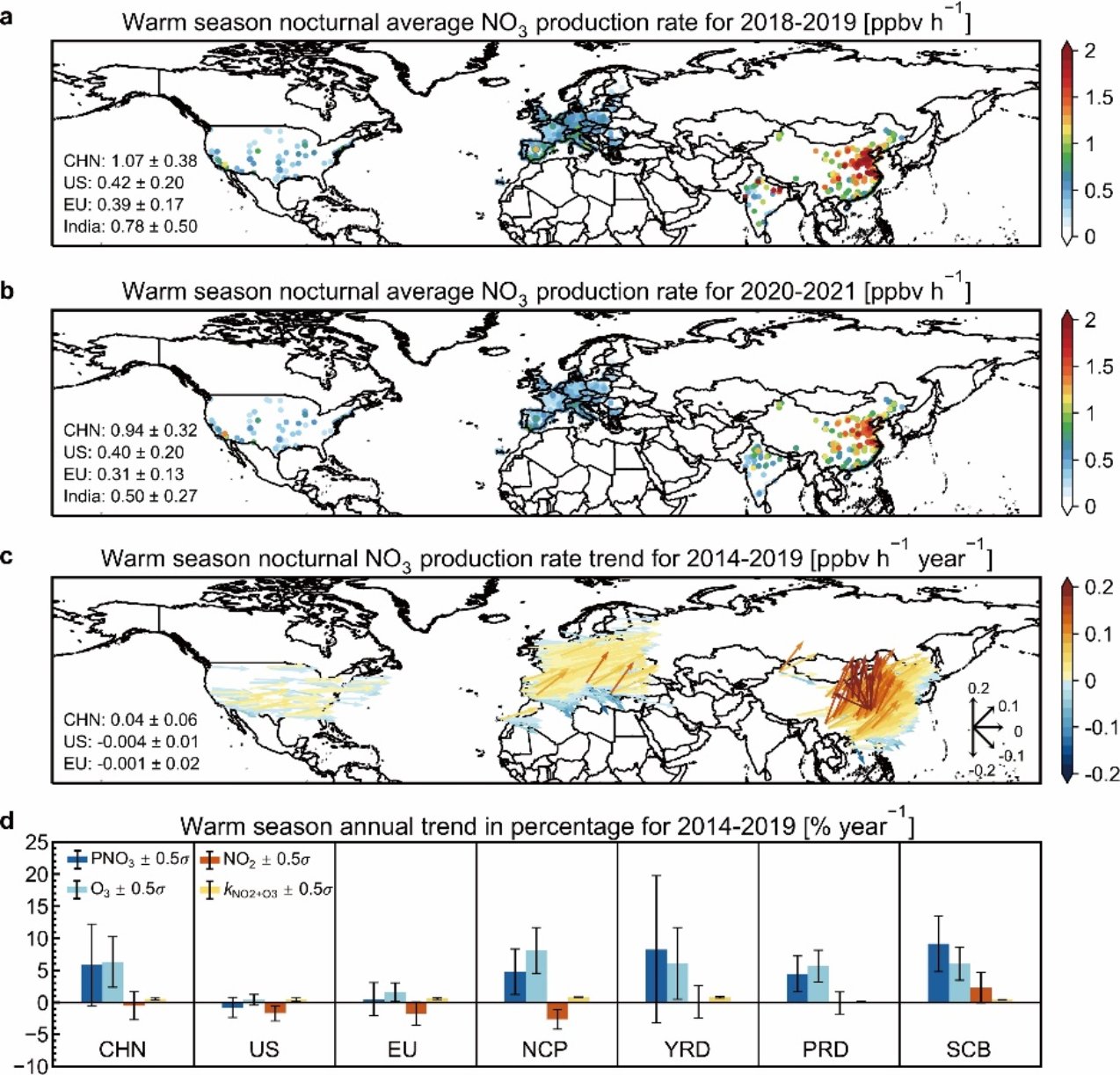
Nocturnal atmospheric oxidation is a process that is critical to air quality and climate through its regulation of both ozone (O3) and PM2.5 pollution. Despite this importance, the spatiotemporal variability of nighttime oxidation and its impacts on a global scale has never been well quantified.
Using a comprehensive surface observational dataset, an international joint research team including Peking University and Sun Yat-sen University in China, and the NOAA Chemical Sciences Laboratory in the United States identified a nighttime oxidation “hot-spot” in China, represented by rapid production of a potent nighttime oxidant that results from the dark atmospheric chemistry known as the nitrate radial, NO3. Nightime chemistry in China undwerwent rapid increase prior to the emission reductions associated with the COVID-19 pandemic. The team identified a concurrent slow decline in Europe and the US. This result indicates a substantial role of nighttime chemistry in contributing to air pollution in China, and likewise in developing countries such as India, in the present day, whereas in past decades this nighttime air pollution chemistry was far more prevalent in polluted areas of the U.S. such as the Los Angeles Basin. The investigators constructed a novel framework to characterize the evolution of nighttime oxidation on emission changes and showed that if recent trends of increasing ozone pollution continue, nighttime oxidation in China will be further enhanced even if other major air pollutants, such as nitrogen oxides (known as NOx), are reduced. Based on the 40-year trend in Los Angeles since 1980 and the global change since the COVID-19, the team suggests that reduction of volatile organic compounds (VOC) is an effective mitigation strategy that would simultaneously reduce daytime ozone and nighttime oxidation in China and similar regions.
So far only a limited number of modeling studies quantitatively assess the response of ozone and particulate matter to nighttime chemical processes, let alone to trends in the initiation of these processes. The new work shows that explicit consideration of such trends in future modeling studies will be of substantial importance to assessment of air quality and climate responses to emissions changes.
As this change will strongly affect ozone formation and has policy implications for the joint control of ozone and fine particulate pollution, consideration of nighttime oxidation is also critical to the development of such comprehensive air pollution mitigation strategies.

Observed level and trend of nocturnal nitrate radical production rate (PNO3) in the warm season (April – September).
The work was published online in Nature Geoscience on January 26, 2023 under the title "Increased nighttime oxidation over China despite widespread decrease across the globe" (https://www.nature.com/articles/s41561-022-01122-x). Keding Lu and Yuanhang Zhang from Peking University and Steven Brown from the National Atmospheric and Oceanic Administration are the co-corresponding authors. Haichao Wang, Xiao Lu and Haolin Wang from Sun Yat-sen University are the co-first authors.